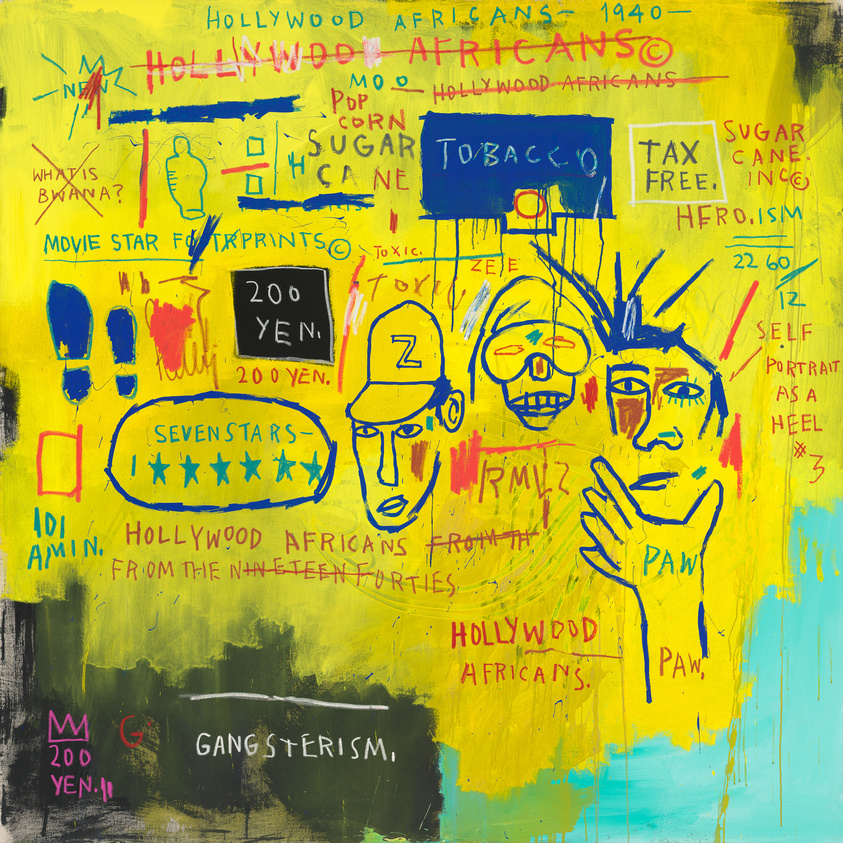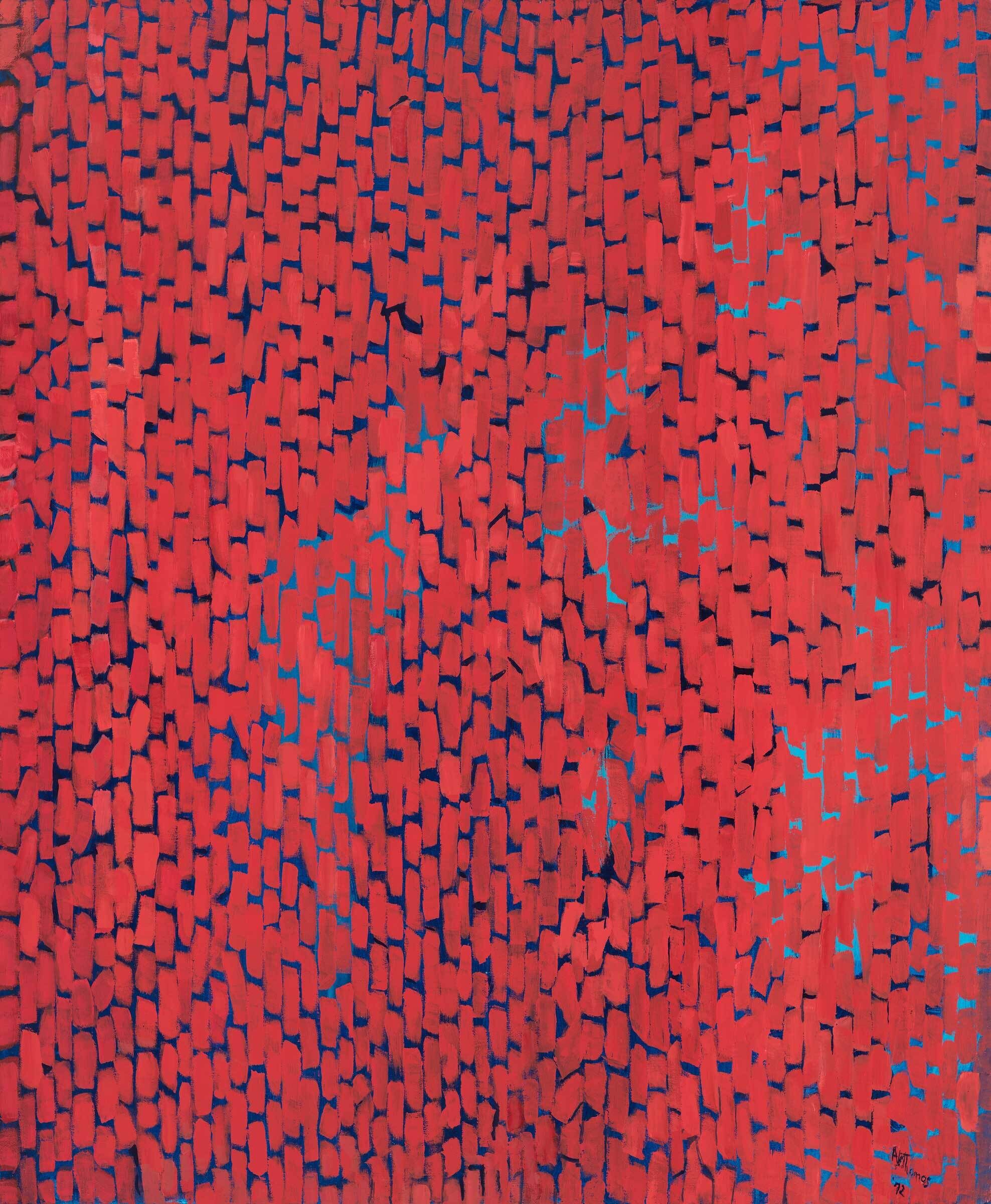Verbal Description: Jean-Michel Basquiat, Hollywood Africans, 1983
June 25, 2025
0:00
Verbal Description: Jean-Michel Basquiat, Hollywood Africans, 1983
0:00
Narrator: Hollywood Africans from 1983 is an acrylic and oil stick painting on canvas. Measuring just over 7 feet tall by 7 feet wide, Jean-Michel Basquiat painted this work on an extended visit to Los Angeles, California. Overall, the painting has a predominantly yellow, washy background with dense text and a few line drawings throughout. At the center of the canvas, Basquiat has painted a schematic portrait of himself as well as his friends and fellow artist-musicians, Toxic and Rammellzee, who had accompanied him to the West Coast. Basquiat is recognizable at the far right by his dreadlocks; the numerals “12,” “22,” “60”—the date of his birth—are inscribed nearby. Basquiat’s disembodied hand cups his face, and he has written the word “paw” twice, on his hand and on his wrist, respectively. To the right the words “SELF PORTRAIT AS A HEEL #3” fill a broad margin. Basquiat, Toxic, and Rammellzee’s faces are locked in a grid of handwritten words in various sizes and colors. Basquiat has written the majority of the text in bright red, warm brown, and cyan colors with occasional white and black crossed out or boxed in. Cobalt blue outlines the portraits, fills negative spaces and shapes, and encircles images.
The yellow background is vibrant and filled with the organic shapes of both hand-written text and the lines and drips that texturize the background. A figure resembling an Oscar award statue without its base hovers above sketches of shoe prints and stars resembling a rating system labeled “seven stars.” Phrases such as “Sugar Cane,” “Tobacco,” “Gangsterism,” and “What is Bwana?” allude to the limited roles available to black actors in old Hollywood movies. The words “Hollywood Africans” are written four times intermittently from top to bottom. Copyright symbols appear after three phrases from left to right.
The background consists of a range of textures. In the lower quadrants of the painting, slivers of raw canvas remain at the edges of the painting under swathes of chalky black and soft teal. Between thin layers of paint that dripped down the canvas, an arc of lines left by fingers drags across the center under the portraits. Basquiat’s distinctive crown signature appears in magenta on the bottom left.


